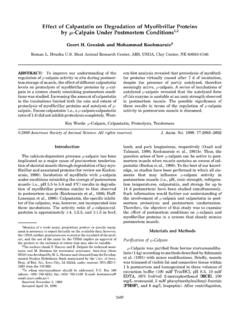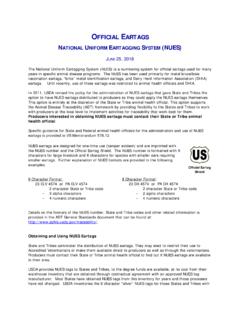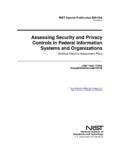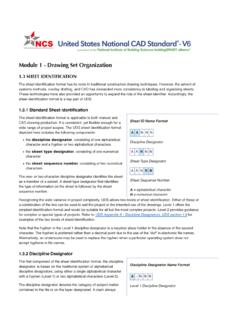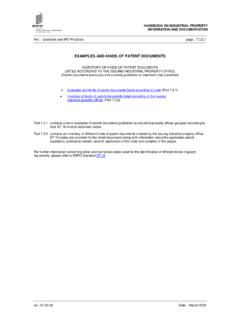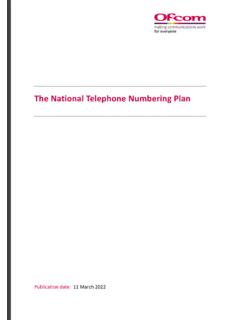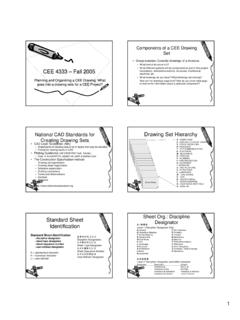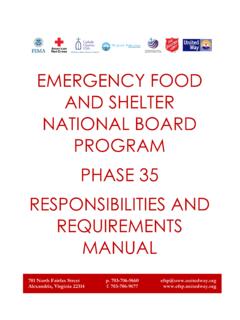Transcription of USDA National NUtrient Database for Standard Reference ...
1 Composition of Foods Raw, Processed, Prepared USDA National NUtrient Database for Standard Reference , Release 21 September 2008 Department of Agriculture Agricultural Research Service Beltsville Human Nutrition Research Center NUtrient Data Laboratory 10300 Baltimore Avenue Building 005, Room 107, BARC-West Beltsville, Maryland 20705 i Department of Agriculture, Agricultural Research Service, USDA NUtrient Data Laboratory. 2008. USDA National NUtrient Database for Standard Reference , Release 21. USDA NUtrient Data Laboratory website: Mention of trade names, commercial products, or companies in this publication is solely for the purpose of providing specific information and does not imply recommendation or endorsement by the Department of Agriculture over others not mentioned.
2 The Department of Agriculture (USDA) prohibits discrimination in all its programs and activities on the basis of race, color, National origin, age, disability, and where applicable, sex, marital status, familial status, parental status, religion, sexual orientation, genetic information, political beliefs, reprisal, or because all or part of an individual's income is derived from any public assistance program. (Not all prohibited bases apply to all programs.) Persons with disabilities who require alternative means for communication of program information (Braille, large print, audiotape, etc.) should contact USDA's TARGET Center at (202) 720-2600 (voice and TDD). To file a complaint of discrimination, write to USDA, Director, Office of Civil Rights, 1400 Independence Avenue, , Washington, 20250-9410, or call (800) 795-3272 (voice) or (202) 720-6382 (TDD).
3 USDA is an equal opportunity provider and employer. Issued September 2008 ii Contents 1 Specific Changes for SR21 .. 1 Data Files .. 3 Database Reports .. 3 Database Content .. 3 Food 3 Nutrients .. 4 NUtrient Retention and Food 8 8 Minerals .. 10 Vitamins .. 11 Lipid 15 Amino Acids .. 18 Weights and 19 Footnotes .. 20 Sources of Data .. 20 Explanation of File Formats .. 20 Relational 20 Food Description File ..22 Food Group Description File .. 24 NUtrient Data File .. 24 NUtrient Definition File ..25 Source Code 26 Data Derivation Code Description File .. 26 Weight 27 Footnote File .. 28 Sources of Data Link File .. 29 Sources of Data 29 Abbreviated File .. 30 Update 32 Summary .. 34 34 Appendix A. Abbreviations Used in Short Descriptions.
4 A-1 Appendix B. Other Abbreviations .. B-1 1 Introduction The USDA National NUtrient Database for Standard Reference (SR) is the major source of food composition data in the United States. It provides the foundation for most food composition databases in the public and private sectors. As information is updated, new versions of the Database are released. This version, Release 21 (SR21), contains data on 7,412 food items and up to 140 food components. It replaces SR20 issued in September 2007. Updated data have been published electronically on the USDA NUtrient Data Laboratory (NDL) website since 1992. SR21 includes composition data for all the food groups and nutrients published in the 21 volumes of AAgriculture Handbook 8@ ( Department of Agriculture 1976B92), and its four supplements ( Department of Agriculture 1990B93), which superseded the 1963 edition (Watt and Merrill, 1963).
5 SR21 supersedes all previous releases, including the printed versions, in the event of any differences. In July 2001, when NDL converted to a new version of its NUtrient Databank System (NDBS), formats were changed and fields added to improve the descriptive information for food items and the statistical information about the NUtrient values. While data in previous releases have been moved to the new NDBS, they may not have been updated through the complete system. Therefore, many of these new fields contain data only for those items that have been processed through the new NDBS and it will take a number of years before they are populated for most food items in the Database . Data have been compiled from published and unpublished sources.
6 Published sources include the scientific literature. Unpublished data include those obtained from the food industry, other government agencies, and research conducted under contracts initiated by USDA s Agricultural Research Service (ARS). These analyses are currently conducted under the National Food and NUtrient Analysis Program (NFNAP), in cooperation with the National Cancer Institute and 16 other offices and institutes of the National Institutes of Health (Pehrsson et al., 2000). Data from the food industry represents the NUtrient content of a specific food or food product at the time the data is sent to NDL. The values may change due to reformulations or other processing changes by individual companies between the time that SR is released and the next update of this Database .
7 Values in the Database may be based on the results of laboratory analyses or calculated by using appropriate algorithms, factors, or recipes, as indicated by the source code in the NUtrient Data file. Not every food item contains a complete NUtrient profile. Specific Changes for SR21 The major changes to the Database since the last release are listed below. Two hundred and sixteen new foods were added to the Database using data generated by USDA through NFNAP or submitted by the food industry: 28 brand name soy milk items, 66 soy-based vegetarian items, 12 new breakfast cereals, 4 types of dark chocolate representing different cacao levels, spray (spritzer) salad dressing, reduced calorie honey 2 mustard dressing, several types of pie crusts, Dutch apple pie, frozen turkey dinner, rice bowl with chicken, pomegranate juice, fruit juice blend, refried beans, grass-fed bison, several rotisserie chicken items (wing, back, breast, drumstick, and thigh), and USDA commodity egg mix and meats.
8 These can be found in the ADD_Food file (p. 32). As part of the American Indian/Alaska Native Database , data for 6 Stellar sea lion items (meat and organs) were added. New pork value cuts were added. These are special cuts of individual lean muscles from the shoulder and leg. They are marketed as value-added cuts, expanding the number of pork cuts available in the market. The demand for grass-fed beef has increased in recent years partially due to consumer interest in the fat content of foods. This release of SR provides new data on strip steaks and ground beef derived from grass-fed beef. NDL has released Uniform Retail Meat Identity standards (URMIS) identification numbers for 190 beef items and 44 pork items in SR-21.
9 The URMIS number is located in the Common Name Field of the Food Description File, and appears along with the common names in applicable SR reports. The URMIS program is a consumer-oriented identification system which simplifies and standardizes the perplexing array of fresh meat cuts and their names. Over the years, URMIS has advanced as a tool for sales information and inventory control. Within the URMIS system identification for meat cuts, Universal Product Code (UPC) numbers have been assigned to every cut. The UPC bar code is used by retailers to electronically scan meat packages and provides the retailer with information to assist in merchandising meat more effectively. The UPC bar code includes the URMIS identification number within its 12 digit code; digits 3 through 6 represent the URMIS number for meat products (More information on the URMIS numbering system can be viewed at ).
10 NUtrient data were updated for cottage cheese, sour cream, infant formulas, canned blueberries, tart cherries, canned crab, farmed Atlantic salmon, pecan pie, pumpkin pie, cr me-filled snack cakes, snack crackers, saltines, chocolate sandwich cookies, chocolate chip cookies, pie crust, beef pot pies, chicken pot pies, brand name soups, trans fatty acid values on selected fast food items, and several snack items. These can be found in the CHG_NUTR file (p. 33). In response to changes in the availability of beef products in retail stores, 266 beef items have been removed from the Database . Most of the removed products were beef cuts with a inch fat trim. Beef cuts currently available in the retail market contain 1/8 or 0 of external trim fat.





